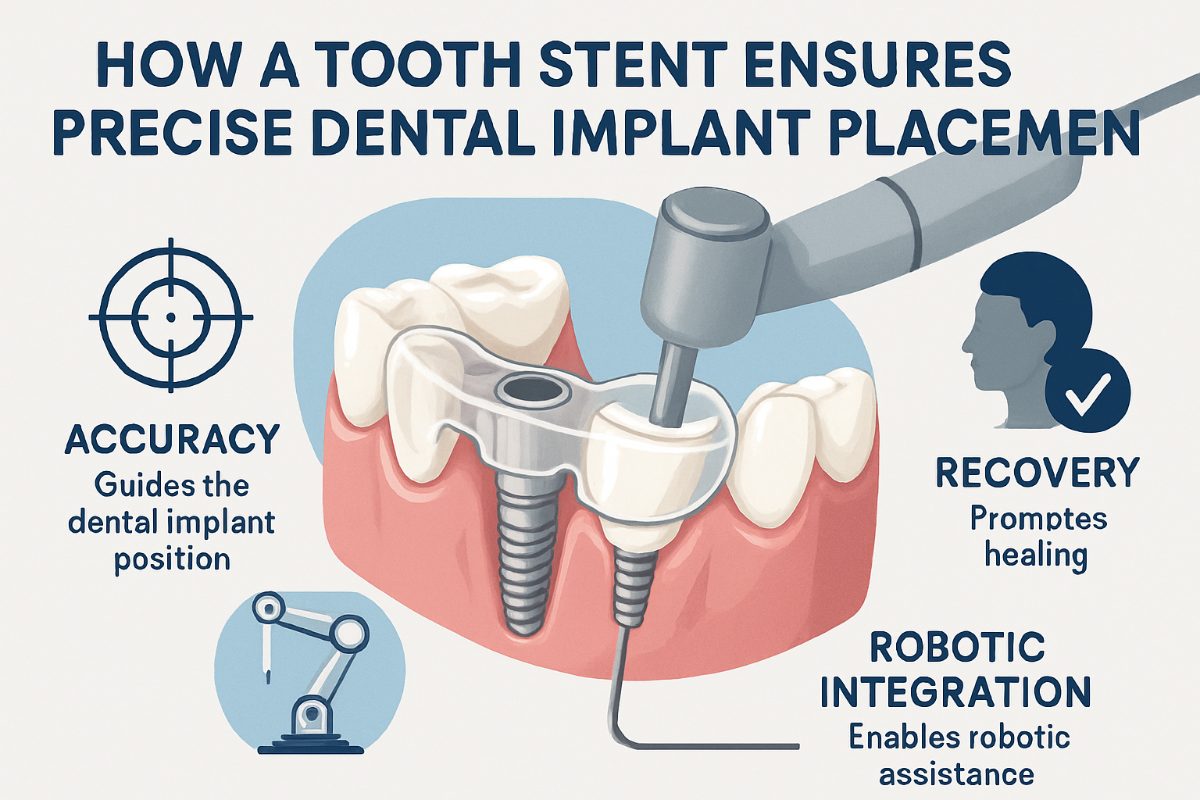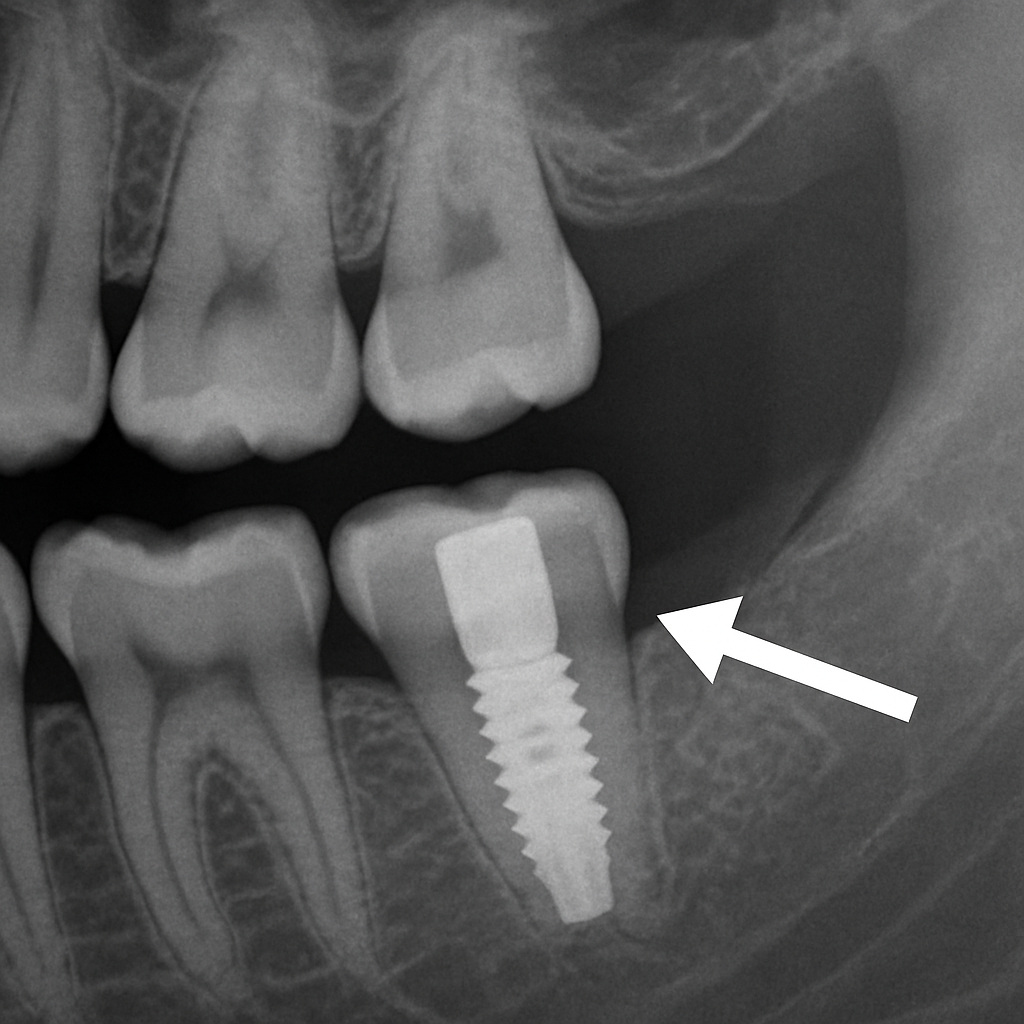Dental Blog - HANNIBAL, MO
Tips, Facts, And The
Latest In Dentistry

Tooth Stent: Your Dental Implant’s Unsung Hero?

A tooth stent may sound technical, but it’s one of the simplest tools that makes dental implants safer and more predictable. A tooth stent is a custom surgical guide made from digital scans that shows exactly where an implant should go. Newer tech like the YOMI robot adds another layer of precision, helping dentists follow the plan closely. Together, they cut guesswork and help patients heal with fewer surprises.
What Is a Tooth Stent?
A tooth stent is a surgical guide used during implant placement. It’s usually made from biocompatible plastics or resin and created from a 3D scan of your jaw and the planned implant position. The stent fits over teeth or gums and has holes that guide drills and implants. Unlike simple templates, a true tooth stent is digitally planned and printed to match the patient’s anatomy and the exact implant plan.
How a Tooth Stent Improves Implant Accuracy
Guiding angle, depth, and position
A tooth stent controls the drill path so the implant goes in at the planned angle, depth, and location. That reduces human error and avoids nearby nerves or sinuses. With digital planning, the stent reflects the final restorative goal — where the crown will sit — not just the implant. This alignment improves long-term function and the look of the tooth.
Reducing surgery time and tissue trauma
Because the stent shows where to drill, the procedure is faster and more focused. Less time working in the mouth means less swelling and bleeding. The stent can limit soft-tissue retraction and reduce the size of incisions, which often leads to less postoperative pain and a smoother recovery for patients.
Tooth Stent and Robotic Implant Placement: YOMI Integration
Robotic-assisted implant placement like YOMI pairs digital planning with real-time guidance. The tooth stent gives a physical guide while YOMI provides haptic feedback and precise control of the handpiece. Together they add redundancy: the stent sets the planned path, and the robot helps the clinician maintain it. This combination increases safety and predictability, especially in complex or esthetic cases.
When Dentists Recommend a Tooth Stent
Dentists commonly use a tooth stent for: – Single-tooth replacement in the smile zone where position matters – Multiple implants or full-arch rehab – Cases expecting bone grafts or sinus lifts – When the final crown position must be exact for esthetics or bite
What Recovery Looks Like After Guided Implant Surgery
Recovery after guided implant surgery is often quicker. Expect mild swelling and soreness for a few days, controlled with ice, rest, and prescribed or over-the-counter pain meds. Follow-up visits check healing and remove sutures if used. Because guided placement is less invasive, many patients report lower pain levels and faster return to normal eating and activity than with freehand implant placement.
How to Choose a Provider for Guided Implants
Pick a team that uses digital planning and has experience with guided systems and robotic tools like the YOMI robot. Ask to see before-and-after cases, learn who plans the digital workflow, and confirm the practice uses 3D scans and trained staff. Experience with both the planning software and the clinical steps matters more than marketing claims.
Short CTA: Learn More About Tooth Stents and Guided Implant Options
Want to know if a tooth stent and YOMI-guided implant are right for you? Schedule a consult or a digital plan review to see your 3D plan and treatment options.




